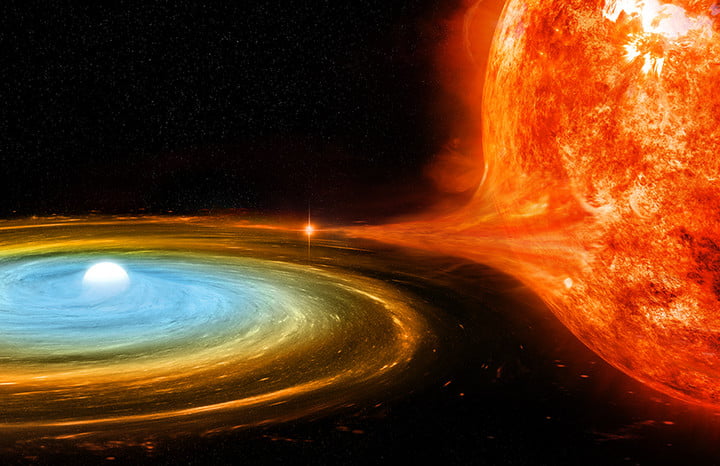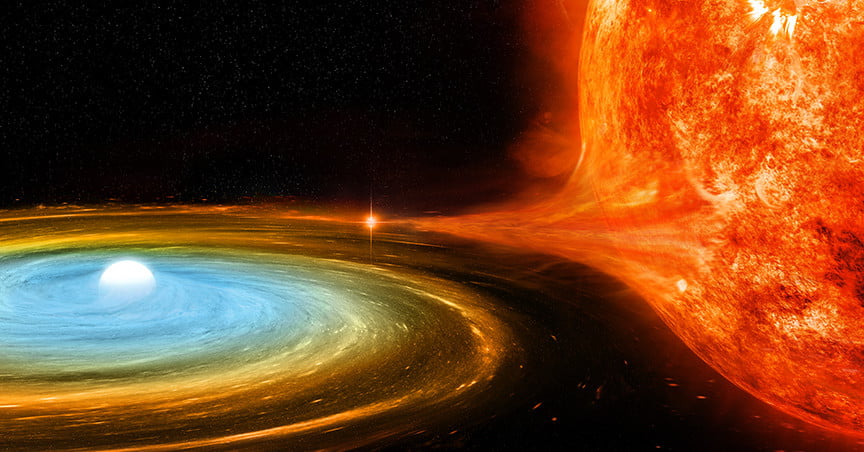White Dwarf Star Unexpectedly Emitting Supersoft X-Rays
The discovery of a white dwarf star emitting supersoft X-rays calls into question the conventional wisdom about how X-rays are produced by dying stars.
When stars run out of fuel after millions of years they shrink down to a smaller size and become much fainter, in a phase known as a white dwarf. The mass of the star remains the same but the size becomes much smaller, so these dwarfs have very strong gravity. White dwarfs are often found in pairs called binary systems, and their strong gravity means that they can pull matter away from their companion stars.
One such system has been identified by NASA’s Chandra X-Ray Observatory project, which found unusual X-ray emissions coming from the binary system containing a white dwarf called ASASSN-16oh. Normally, a star would be expected to produce low-energy X-rays, called soft X-rays. But the ASASSN-16oh white dwarf is emitting X-rays that are much brighter than expected, earning it the unusual classification of being a source of “supersoft” X-rays.
The supersoft X-rays suggest that the white dwarf must have a temperature of several hundred thousand degrees, which is hotter than normal stars. However, this high temperature is only found at certain points on the surface of the star. Astronomers believe this may be because ASASSN-16oh is pulling material away from its companion red giant at a fast rate, and this matter gets hotter and hotter as it spirals towards the white dwarf. The hot gas settles on the accretion disk (the disk of matter swirling around the star), where it eventually merges with the surface of the star and produces X-rays. However, because this process happens at a varying rate, there are some times when the matter flows more quickly and the star temporarily produces brighter X-rays.

It was previously believed that supersoft X-rays were only observed when nuclear fusion was occurring in white dwarfs. But in the case of ASASSN-16oh, the uneven distribution of the X-rays in addition to the optical light given out being too faint indicate that fusion is not happening in this star. “Our result contradicts a decades-long consensus about how supersoft X-ray emission from white dwarfs is produced,” Thomas Nelson from the University of Pittsburgh told NASA. “We now know that the X-ray emission can be made in two different ways: by nuclear fusion or by the accretion of matter from a companion.”




